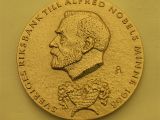As it was somewhat expected, given this year's debates over various quantum particles topics, but mainly those related to CERN's Large Hadron Collider, the Nobel Prize for physics was awarded yesterday for groundbreaking discoveries in the field of quantum physics. Thus, it was handed to some researchers that are closely linked to the Higgs bosson or the early moments of the Big Bang, but focused on a different aspect and approach.
The declared winners were Yoichiro Nambu from the Enrico Fermi Institute at the University of Chicago, United States, Makoto Kobayashi from the High Energy Accelerator Research Organization in Tsukuba, Japan, and Toshihide Masukawa from the Yukawa Institute for Theoretical Physics (YITP) at Kyoto University, also in Japan. Their portion of the quantum physics field covers symmetry breaking, which states that extremely small fluctuations that have an impact on a system going through a critical state can determine its further evolution by deciding which path of the evolution is chosen. The critical state (or point) refers to the pressure and temperature conditions that influence the existence or disappearance of a phase boundary.
Although symmetry breaking can be applied to various things, like determining the shape of a snowflake based on its composition, the team comprised of the 3 researchers focused on the creation of the universe. Basically, their theories indicate that, during the universe's evolution, matter somehow gained the upper hand in its struggle against antimatter, leading to the formation of today's celestial bodies. These two forms of matter emerged simultaneously and symmetrically, in the same amounts, when the Big Bang occurred. But they annihilate each other, releasing energy in the process. If there wasn't for the universal symmetry disruption that caused matter's dominance over antimatter, nothing we know would have ever been formed, from galaxies to humans and their creations.
Yoichiro Nambu got half of the prize money for his “spontaneous symmetry breaking” theory of the 3 forces (the strong force, the weak force and the electromagnetic force) derived from the Big Bang that influence the indivisible particles which form matter. Makoto Kobayashi and Toshihide Maskawa received the other half for their studies showing that, under specific conditions, antimatter doesn't behave by the same physics laws as matter does.

 14 DAY TRIAL //
14 DAY TRIAL // 
